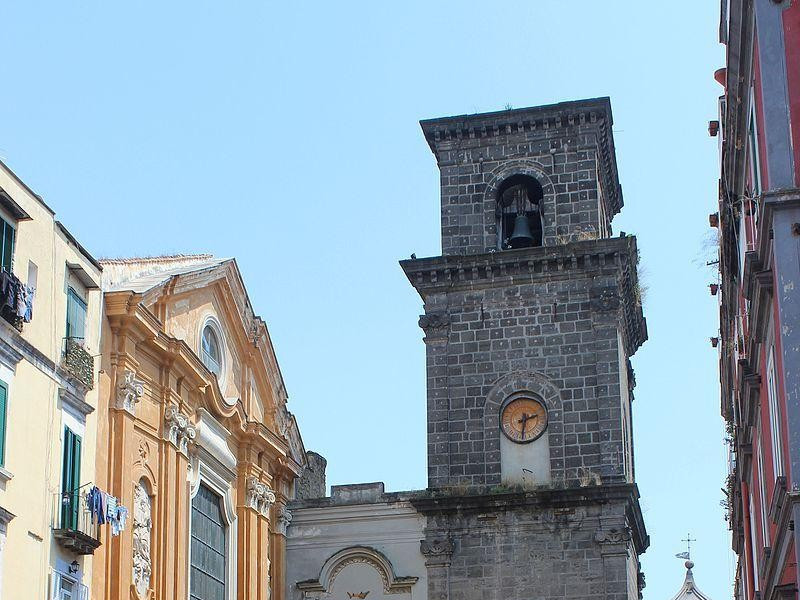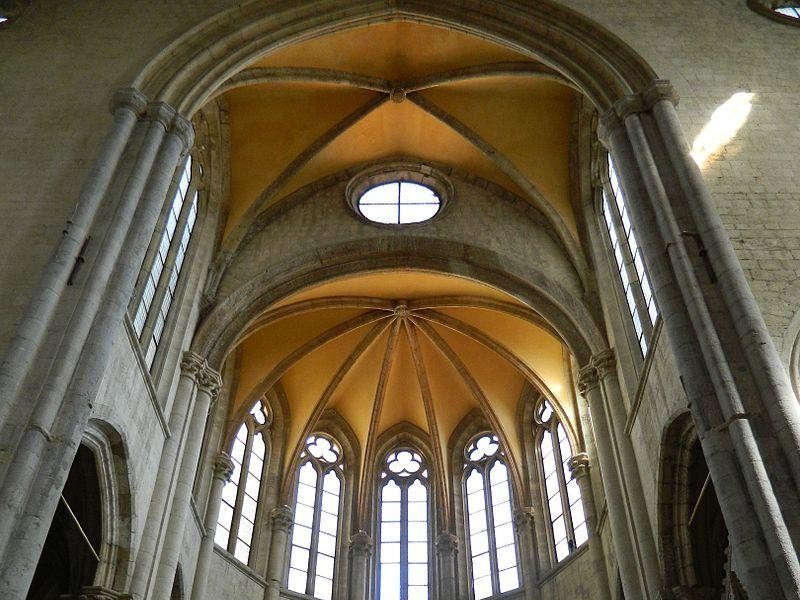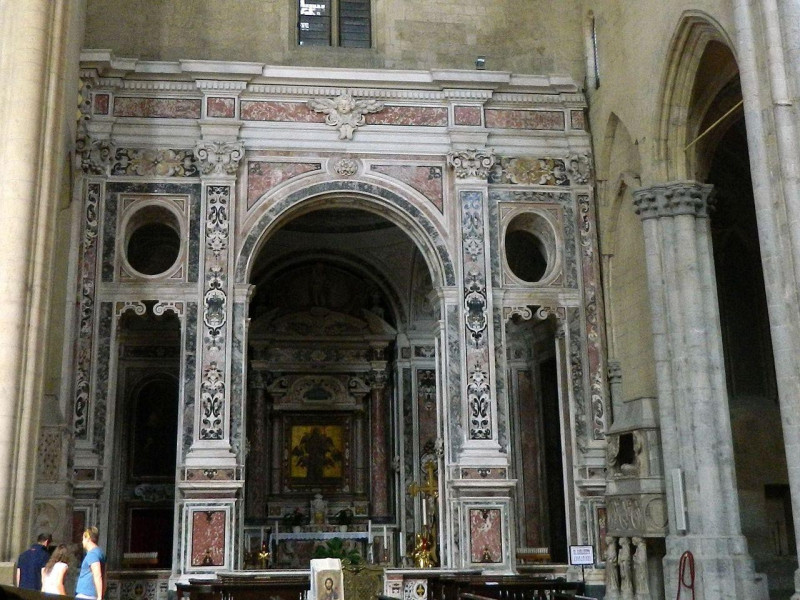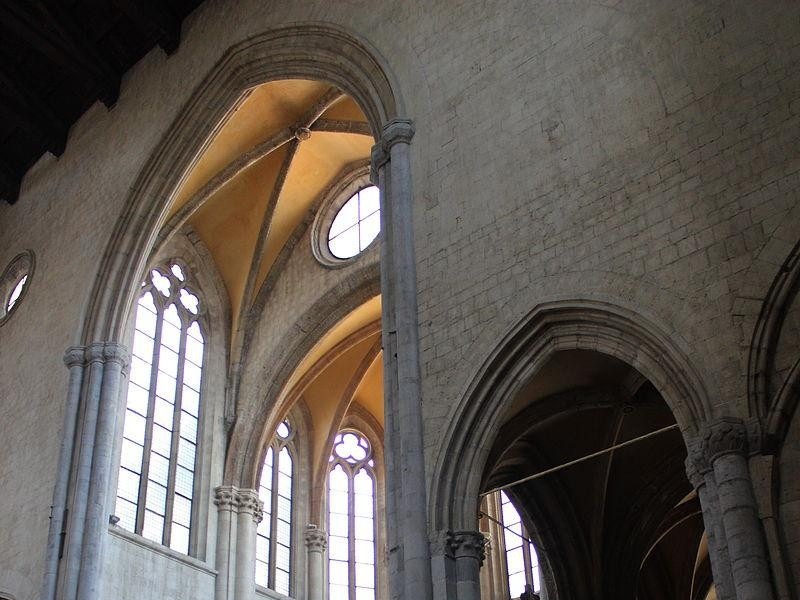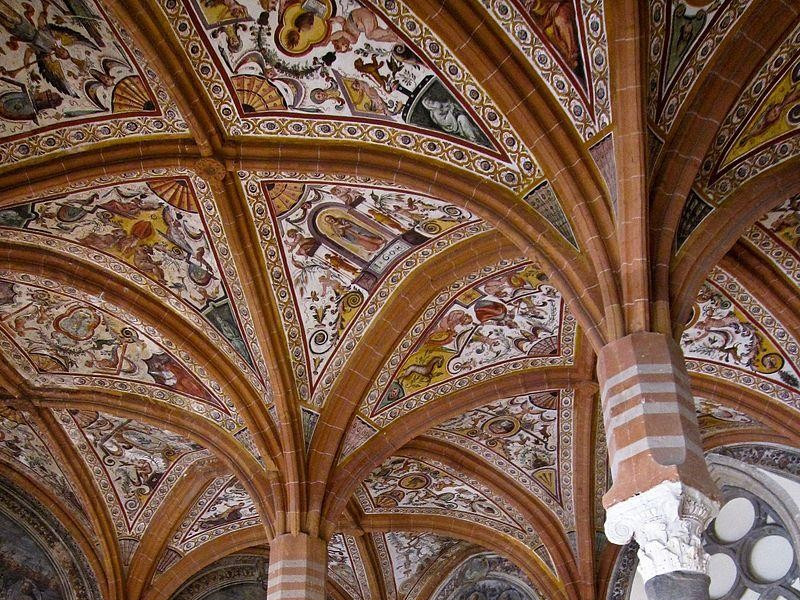Basilica di San Lorenzo Maggiore
It is one of the most important monuments of the city. The Convent houses the Museum of the St. Lowrence's Opera, which also includes a visit to the archaeological site of the same name. It was Charles I of Anjou in 1270 to subsidize the construction of the Basilica and the Convent. The mixture of Gothic and Franciscan style culminates in the apse, it built the first part of the Church, which is considered unique in its kind in Italy, classic example of French Gothic architecture. The Basilica was often the protagonist of important historical events for the city and the Kingdom. In 1343, in the Convent he lived Petrarch. Repeatedly interrupted and resumed, the restoration finished in the second half of the twentieth century, gradually erasing the Baroque additions, except for the facade by Ferdinando Sanfelice, for Cacace Chapel and the St. Anthony's Chapel, by Cosimo Fanzago, 1638. The interior has a Latin cross with 17 chapels open by arches. All heterogeneous, the chapels are home to the tombs of famous personalities of the history of Naples, as the philosopher and playwright Giovanni Battista Della Porta. In the majestic St. Anthony's Chapel are paintings by Francesco Di Maria and Mattia Preti. In the right transept are preserved instead various pictorial evidence dating back to the origins of the Church, like the cycles of fourteenth-century frescoes by Montano d'Arezzo. The high altar, Renaissance work of the most beautiful of Naples, is by sculptor Giovanni da Nola. At the side of the altar, it is the tomb of Catherine of Austria, first wife of Duke Charles of Calabria, Neapolitan work by Tino Camaino. Adjacent to the Church is the St. Lowrence's Monastery, whose rooms house the Museum. Among the original setting, the Chapter House and the Hall of Sixtus V, both accessible from the monumental Cloister, an important testimony of the eighteenth century with an exquisite marble and piperno well, sculpted by Cosimo Fanzago in the middle of the courtyard, and tombs of Renaissance invoice. The Chapter House, covered with vaults and built during the Swabian period (1234-1266), was painted by Luigi Rodriguez, in 1608. The below area shows the Greek-Roman archaeological excavations, dated around the second half of the first century, when St. Gaetano Square stood the Greek agora and then Roman Forum.
